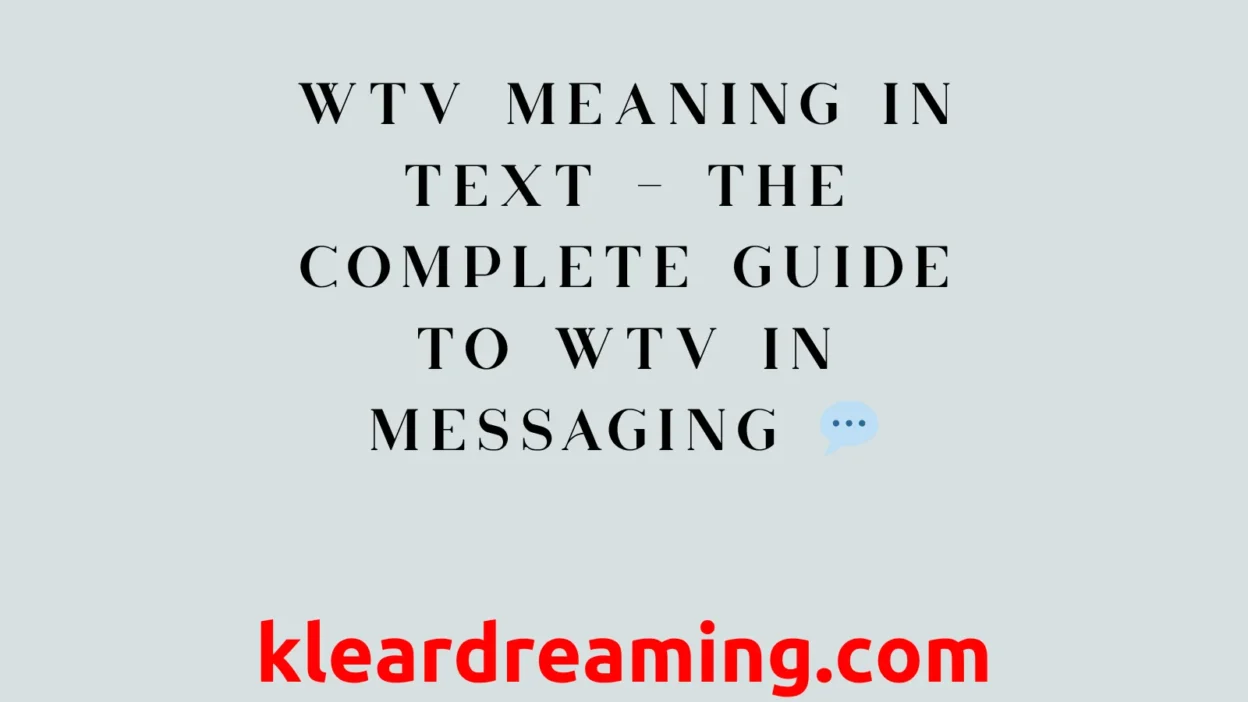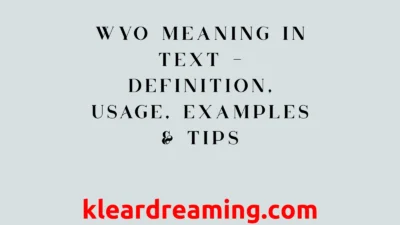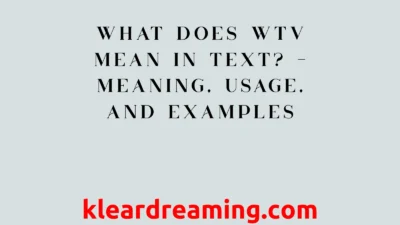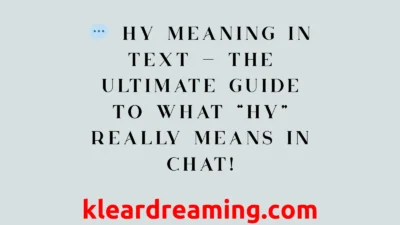In today’s digital world, texting, social media, and instant messaging dominate communication. Certain abbreviations have become part of everyday language, and one of the most common you’ll see is WTV. It’s short, versatile, and shows up in chats more often than you might realize.
This guide explains the full WTV meaning in text, how it’s used, its tone, contextual examples, related acronyms, and tips for texting like a pro. Whether you’re trying to decode a message from a friend, understand social media shorthand, or simply expand your knowledge of texting slang, this article is for you.
What WTV Means
WTV stands for “whatever.”
Key Points:
- Meaning: A casual response indicating indifference, agreement, or flexibility.
- Tone: Can be laid-back, neutral, playful, or even slightly dismissive depending on context.
- Use-case: Informal communication, such as group chats, messaging apps, and social media.
- Format variations: Appears as “WTV,” “wtv,” or “Wtv,” with no change in meaning.
Example:
Friend: “Do you want pizza or burgers tonight?”
You: “WTV 😄”
Here, you’re expressing: “I don’t mind, you decide.”
How WTV Is Used in Texting & Social Media
WTV is popular because it is short, informal, and quick to type. Abbreviations like this are part of a larger system of chat acronyms and internet slang designed for fast communication.
Common Usage Contexts:
- Making plans: “Wanna meet at 5 or 6?” → “WTV, I’m free either time.”
- Group chat decisions: “Should we order in or go out?” → “WTV, you pick.”
- Expressing indifference: “WTV … I don’t care either way.”
- Ending a discussion: “WTV – done talking about it.”
Platform-Specific Usage:
- Snapchat: Often used in direct messages for casual responses.
- Instagram: Seen in captions, replies, and comment threads.
- WhatsApp & Messenger: Quick responses in group or private chats.
Tip: Emojis enhance tone and prevent misinterpretation.
Practical Examples of WTV
| Scenario | Example | Tone |
|---|---|---|
| Choice between options | “WTV, you pick the restaurant.” | Friendly / Neutral |
| Indifferent response | “WTV 🤷” | Carefree / Unconcerned |
| Slightly dismissive | “WTV 🙄” | Sarcastic / Dismissive |
| Group chat consensus | “WTV guys? Any suggestions?” | Neutral / Collaborative |
Pro Tip: Use emojis to clarify tone. Without them, WTV can be misinterpreted as rude or dismissive.
Related Abbreviations & Chat Slang
Understanding WTV also means recognizing related acronyms used in text messaging and social media:
| Abbreviation | Meaning | Notes |
|---|---|---|
| WYD | “What you doing?” | Casual inquiry |
| IDK | “I don’t know” | Shows uncertainty |
| BRB | “Be right back” | Temporary absence |
| SMH | “Shaking my head” | Expresses disbelief or frustration |
| W/E or Wev | “Whatever” (variation) | Alternate form of WTV |
Knowing these helps you read and respond to chats fluently, and understand the wider texting language ecosystem.
Origin, Popularity & Cultural Notes
Where It Came From
“Whatever” has existed for centuries, but WTV emerged with the rise of text messaging and online chats, where brevity became essential. It’s part of a larger trend of chat acronyms, developed to save time and reduce typing effort.
Popularity
- Common among teens and young adults who frequently use messaging apps and social media.
- Seen in comments, chat threads, and social media captions where brevity matters.
Cultural Interpretation
- Positive/neutral use: Signals flexibility or casual agreement.
- Negative/dismissive use: Can imply lack of interest if tone is missing or emojis aren’t included.
- Context is key: WTV can be friendly in a casual conversation but rude if used carelessly.
Key Questions About WTV
Is WTV rude?
- Not inherently. Tone and context matter. Without emojis or friendly phrasing, it can feel dismissive.
Can WTV be used professionally?
- No. It is informal slang and should not appear in professional emails or workplace chats.
Difference between WTV and “whatever you want”?
- WTV is short, casual, and versatile. “Whatever you want” is longer, explicit, and slightly more formal.
Alternatives to WTV in texting:
- “It doesn’t matter”
- “I’m fine with anything”
- “Your choice”
- Variations like “Wev” or “W/E” also exist.
Does WTV only express indifference?
- Not always. It can show flexibility, agreement, or simply be a casual conversation closer.
Examples in Chats & Social Media
- Snapchat: “WTV 😎” → relaxed, casual check-in
- Instagram DM: “WTV, you pick 🎬🍕” → flexible plan suggestion
- Group chat: “WTV guys? Any ideas?” → collaborative discussion
Pro Tip: WTV works well in polls, quizzes, or comment sections to engage friends and followers.
Tips for Using WTV Effectively
- Add emojis to clarify tone: “WTV 😄” vs “WTV 🙄” conveys different feelings.
- Consider context: Casual chats are fine, serious discussions are not ideal.
- Know your audience: Teen or friend groups understand WTV; adults may not.
- Avoid overuse: Using WTV too frequently can appear lazy or uninterested.
- Combine with other abbreviations to maintain conversational flow.
Misinterpretation & Context
- No emojis: May appear dismissive.
- Overuse: May seem uninterested or lazy.
- Professional chats: WTV is inappropriate in workplace emails, meetings, or formal messages.
Key Insight: Tone, context, and emojis are crucial for WTV’s interpretation. Used wisely, it is friendly and casual; used poorly, it can be misread as rude or apathetic.
Final Thoughts
WTV may be just three letters, but it carries significant meaning in digital communication. It allows quick responses, shows flexibility, and keeps conversations casual. Understanding when to use it, its tone, context, and alternatives ensures your messages are clear and friendly.
Next time you see WTV in a message, remember: it simply means “whatever”—flexible, casual, and versatile. Use it with the right tone and you’ll communicate like a pro in texting, social media, and instant messaging.



